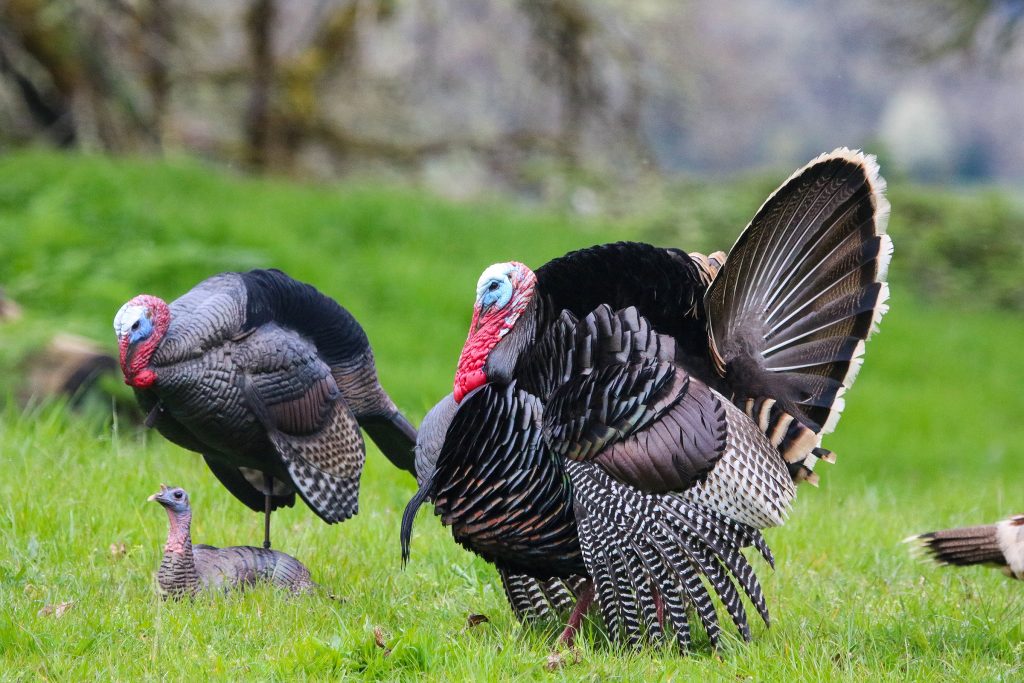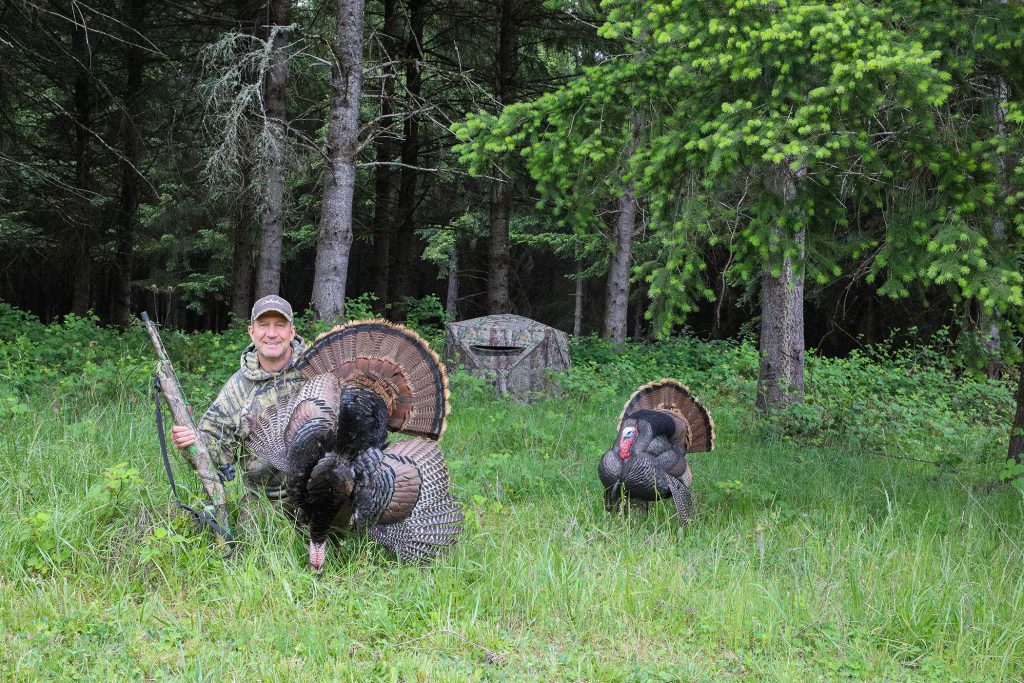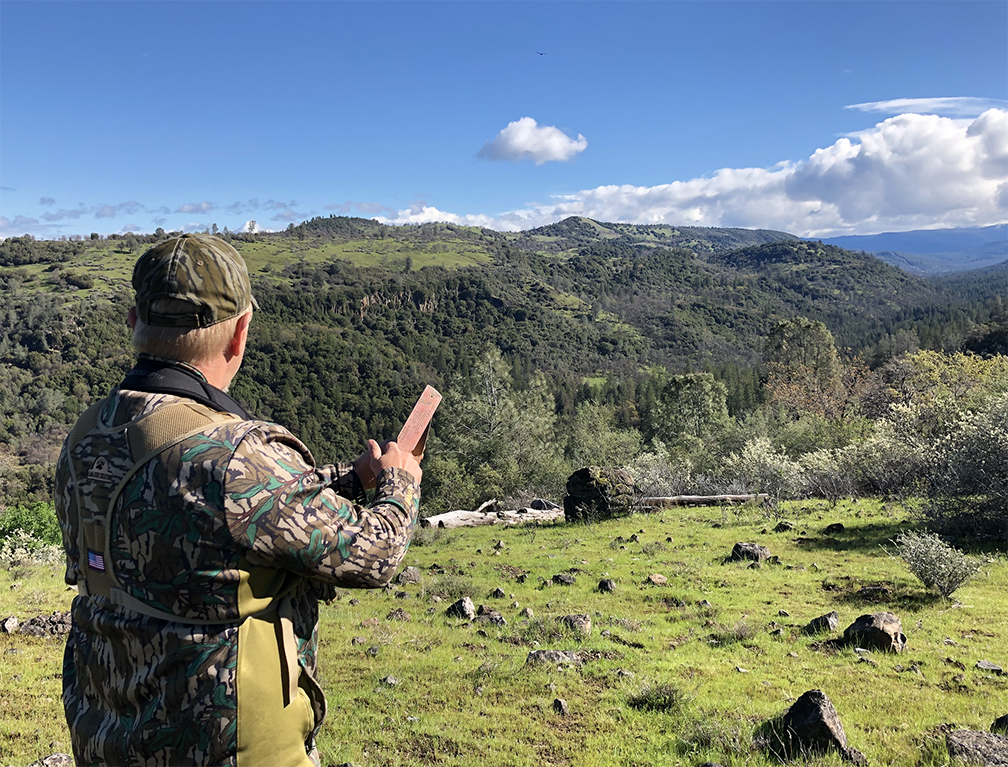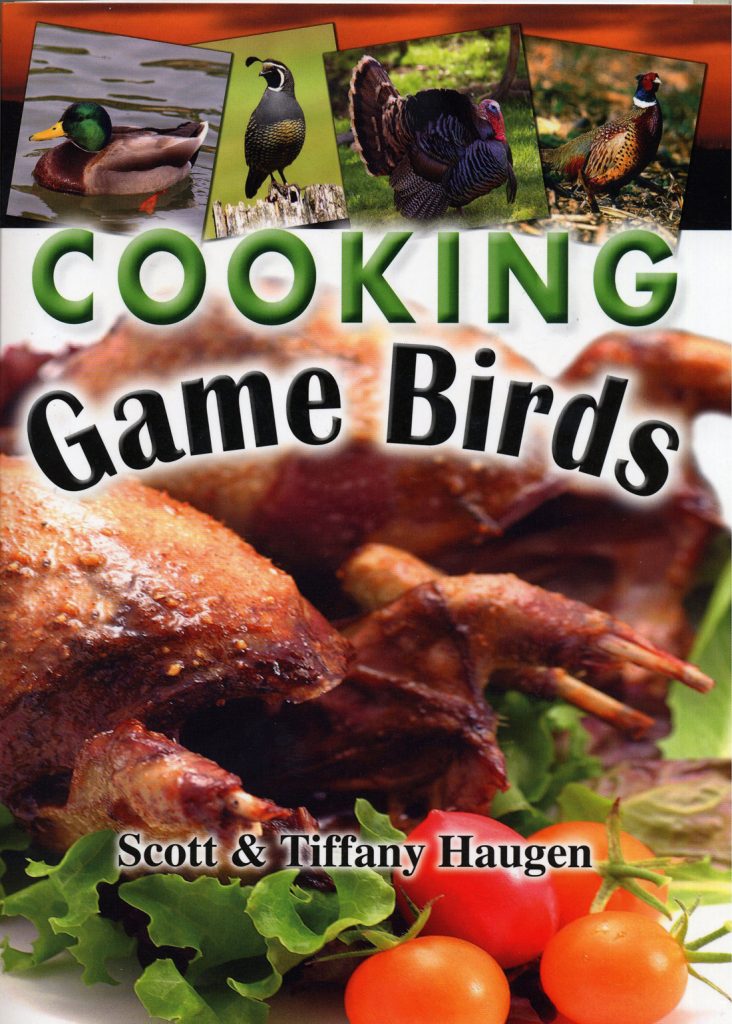Spring Wild Turkey Opener Approaching

We have a great spring turkey story from our Scott Haugen in the March issue (see below), but here’s the California Department of Fish and Wildlife’s release on the March 27 opener of turkey hunts for spring:
California’s general spring turkey season opens statewide March 27 and runs through May 2 with additional hunting dates for young hunters and archery hunters.
Among the many opportunities to bag a wild turkey this spring:
- Those possessing a valid junior hunting license get the first chance at a spring turkey. A youth-only weekend hunt takes place March 20-21, a week before the general season opens. A post-season youth hunt begins Monday May 3 and runs through Sunday May 16. Shotguns are permitted for all youth seasons.
- A special, archery-only hunting season begins Monday, May 3 and runs through Sunday, May 16.
- CDFW’s SHARE Program, which offers public hunting opportunities on private properties, is offering drawings for spring turkey hunts on two private ranches in Tulare County, the 722-acre River Ridge Ranch and the 975-acre Hart Ranch, including one post-season hunt Sunday, May 16 at the River Ridge Ranch for adult archery hunters or junior hunting license holders with a shotgun. Applications for these special hunts must be made through CDFW’s online sales site. There is a $12.42 application fee for each hunt with most of the money raised returned to participating landowners. For more details on these hunts, please visit www.wildlife.ca.gov/hunting/SHARE.
- CDFW will host nearly 100 special turkey hunts on public lands throughout the state this season. The hunts were available through an online lottery process that has now closed.
- Dozens of CDFW wildlife areas will be open to wild turkey hunting on a walk-in basis throughout the season. Please visit CDFW’s Ecological Reserves and Wildlife Areas of California webpage for a listing of these wildlife areas and the recreational opportunities available.
With stable to growing populations of wild turkeys in many parts of the state, the spring turkey season has become one of the more anticipated events on the hunting calendar.
Shooting hours for spring turkeys are from one half-hour before sunrise to 5 p.m. Both a hunting license and upland game bird stamp validation are required to hunt wild turkeys, although an upland validation is not required for junior hunting license holders.
Hunters are limited to one bearded turkey per day with a spring season limit of three birds.
Nonlead shot is required when taking wildlife with a firearm anywhere in the state. Turkeys also can be legally hunted with air rifles and lead pellets of at least 0.177 caliber. Crossbows may be used for the general turkey season but not during the archery season.
Turkey hunters are strongly encouraged to review the 2020 CDFW Wildlife Area Operational Changes Due to COVID-19 webpage prior to visiting any state-operated wildlife area in order to understand all required health and safety practices in place to help protect visitors and staff. Turkey hunters are further advised to check with the local management of the individual property they are planning to hunt for specific entry procedures, details and other regulations.
Below are general COVID-19 safety guidelines to reduce the risk of exposure to the virus in the outdoors:
- Stay Local: Stay close to home during this pandemic period. If you or anyone in your household is feeling sick, please remain at home and plan your trip for another time.
- Plan Ahead: The ongoing pandemic response continues to be dynamic. Prior to leaving home, check to ensure your destination is open, if parking is available and what visitor guidelines may be in effect.
- Stay Safer at Six Feet: No matter the recreational activity, maintain a physical distance of six feet or more. Those camping together should only include people within your immediate household. This means no guests or friends, and no gatherings or parties.
- Keep Clean: Be prepared as not all services may be available. Restrooms may be unavailable or closed. Bring soap/hand sanitizer. Please pack out all trash.
- Stay Covered: The state requires you to wear a face covering when you cannot maintain a physical distance of six feet or more. Individuals must have a face covering with them at all times.
And here’s Scott and Tiffany Haugen’s story on turkey hunting:

By Scott Haugen
When it comes to spring turkey hunting, the behavior and movements of toms change throughout the season.
By the time the spring hunt opens – March 27 for the 2021 season – most of the hen turkeys have been bred, but they may not start sitting on their nest until after the hunting season begins. For this reason, toms often stick close to hens during the first few weeks of the hunting season, making it challenging for hunters to coax gobblers within shooting range.
CALLING IN A TOM
Hunters can locate turkeys by using owl, crow and even peacock calls to elicit a gobble from a tom. These locator calls can be used right before dark with turkeys on their roost in order to figure out where to start hunting the following morning, or before turkeys leave the roost early in the morning, before daylight. Once a tom gobbles, pinpoint its location and move to a position to set up and start using turkey calls to bring it in.
If tom numbers are low, they are often less likely to leave their strutting ground and the hens in the area to check out a random hen that’s calling in the distance. For this reason, it’s a good idea to sneak in close to a tom prior to calling. If you can get within 100 yards of a tom that’s sticking tight to its strutting ground without being seen or heard, you have a better chance of calling it in.
Conversely, if tom ratios are high and the competition to breed is intense, set up further away and call. Having an eager tom travel a quarter- mile or more to check out your calls is not uncommon early in the spring season where hens are sparse.

KNOW YOUR PURPOSE
Remember, as hunters we are defying nature when we sit in one place and attempt to call a tom turkey to us. In the wild, toms establish a strutting zone and go there nearly every day to gobble, strut and wait for hens to come to them. As hunters, we’re calling and simulating a hen that won’t budge, and trying to convince a tom to leave its comfort zone to check us out.
If a tom is located the night prior to the hunt, get to your designated spot at least 30 minutes before legal shooting light the following morning. If hunting from a ground blind, setting it up the night before will allow you to silently slip into it come morning. Turkeys don’t like flying in the dark, which is why it’s important to get into position before the first hint of light.
LOCATION, LOCATION, LOCATION
If locating a tom before sunup, quickly decide where the best place is to set up and get there, fast. By setting up in the dark the chance of a turkey busting you greatly decreases. If you do accidentally make noise when approaching your calling location, quickly get to your spot and sit in silence. Letting an area settle down for 15 minutes or so once you’ve set up is wise.
When getting into a calling position, it’s best to have any wind at your back; that way the sounds of your calls carry toward the tom. Fortunately, turkeys have a poor sense of smell, so their winding you is not a concern.
If winds are heavy you may not hear a tom gobble back at you. In this situation, it’s better for a tom to hear your calls than you calling into a stiff wind, where the bird might not hear the sounds you’re making.

GET TO WORK
Once at your calling location, quickly and quietly get set with all the gear you’ll need. If using a slate call, arrange the strikers on the ground next to you. Lean the strikers on a stick so the tips are elevated; this way they won’t get wet or dirty on the end, which can render them useless.
If using multiple box calls, have them next to you, not buried in a pack or vest where you won’t be able to get to them without making noise. If using diaphragm calls, put one in your mouth and have others in an easy place to access. The objective is being able to reach all your calls with minimal movement and sounds, so as not to spook approaching toms.
STAYING STILL
When a turkey is in sight, don’t move. Turkeys have eyesight that’s equivalent to a good pair of binoculars, and they see in color. You should move only when a turkey is out of sight, has its head down or its head is behind a fanned tail.
If a tom doesn’t come in, come back to hunt him another day, and maybe from a different angle. There are many reasons a tom may not come in, and not all of them are the fault of the hunter. In this case, head to another hunting location and start over.
DON’T LET THEM SEE YOU
When setting up on turkeys in the daylight, it’s important to utilize cover while you’re moving. Turkeys have great vision, and if they see you there’s virtually no chance of calling them in. If hunting from a ground blind, position it where a turkey has a clear approach lane.
Turkeys like traveling along the path of least resistance, so having game trails, openings with few impediments – even fields or meadows – will increase the likelihood of a turkey approaching your calls. This is where a decoy also comes in handy; for once a tom sees it, the bird will be more motivated to cover ground.
BE STEALTHY
By moving wisely – without being seen – turkey hunters greatly increase the odds of calling in a tom. Remember, wild turkeys have a lot of natural predators in the woods and are very aware of what’s going on around them at all times.
The more stealth a hunter employs in spring, the greater their chance of filling a gobbler tag. CS
Editor’s note: For signed copies of Scott Haugen’s best-selling book, Western Turkey Hunting: Strategies For All Levels, visit scotthaugen.com. Follow Scott’s adventures on Instagram and Facebook.
TIFFANY HAUGEN’S RECIPE: NEW ORLEANS-STYLE GOBBLER

By Tiffany Haugen
While eating our way through New Orleans, many dishes motivated me to jot down flavors and textures I could try to recreate with wild game and fish.
Wild turkey can be tricky to tame, requiring proper field care and proven cooking techniques. Very often we’ll separate the breast meat, cooking it hot and fast in a stir-fry or pounded thin for cutlets.
The rest of the turkey will always benefit from slow or pressure cooking. If looking for something you can quickly do with any or all of your turkey, look no further than this flavorful Instant Pot recipe.

3 pounds wild turkey
2 tablespoons olive oil
1 cup chopped onion
1 cup chopped green bell pepper 1?2 cup chopped red bell pepper Four cloves garlic, chopped
2 teaspoons paprika
1 teaspoon chili powder
1 teaspoon black pepper
1 teaspoon oregano
1 teaspoon thyme
1 teaspoon red chili flakes
1 teaspoon salt
2 cups chicken broth
One jalapeño pepper, thinly sliced 3?4 cup sour cream
If using legs and thighs, separate at the joint. If using turkey breast meat, cut into large chunks, about the size of a fist. Place olive oil in Instant Pot or pressure cooker and sauté onion, bell peppers and garlic until onions are softened.
Add seasonings and continue to sauté for one to two minutes. Add turkey pieces and brown on all sides, then add chicken broth and seal the Instant Pot. Cook on high pressure for 25 minutes. When the meat has pressure cooked, use the quick release button and let the pressure off.
Once it’s safe to remove the lid, remove all turkey pieces. Add sliced jalapeño peppers and whisk sour cream into the turkey liquid. Let turkey cool slightly and, using a fork, pull all the meat from the remaining bones. Add “pulled” turkey back to the Instant Pot and simmer, allowing the liquid to thicken. Serve in a bun, over biscuits or rice, or stir cooked pasta into the turkey mixture.

Editor’s note: For 150-plus more great bird recipes and signed copies of Tiffany Haugen’s popular cookbook, Cooking Game Birds, send a check for $20 (free S&H) to Haugen Enterprises, P.O. Box 275, Walterville, OR 97489, or order online at scotthaugen.com.



